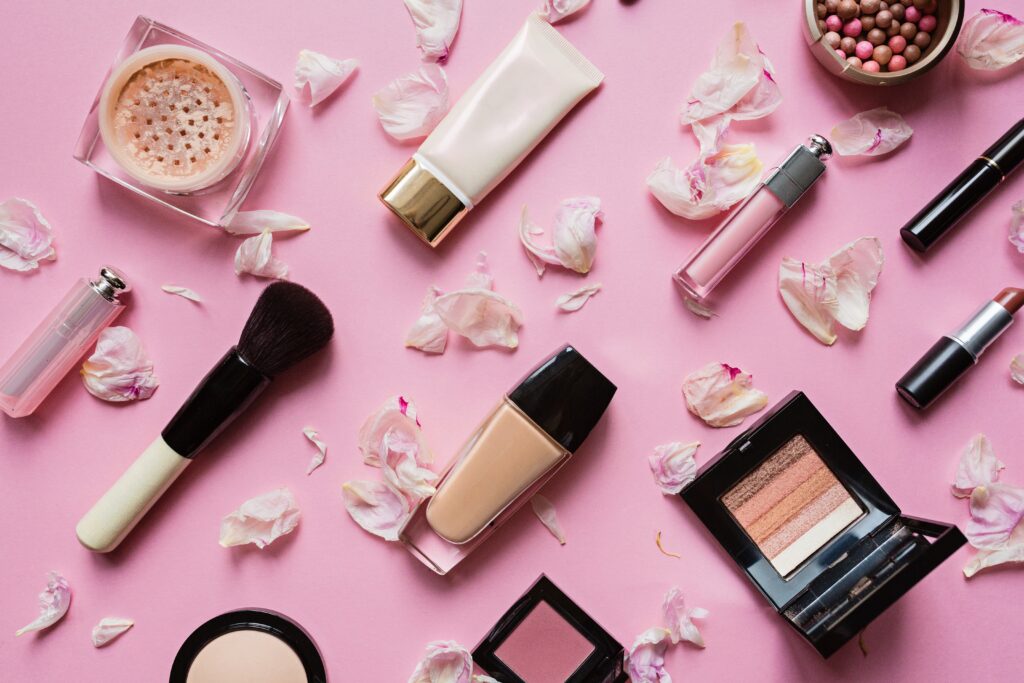The Estée Lauder Companies Inc. (NYSE:EL) is one of the world’s most iconic names in the global beauty industry, with a legacy that spans more than seven decades. Founded in 1946 by Estée Lauder and her husband Joseph, the company began as a small family-run business selling just four products. Through relentless innovation, a commitment to quality, and a deep understanding of consumer needs, it has grown into a global powerhouse in the prestige beauty segment. Today, Estée Lauder stands as the second-largest player in the $160 billion global prestige beauty market, operating in more than 150 countries and regions across the world.
At the core of Estée Lauder’s success is its diverse and prestigious portfolio of 25 internationally recognized brands. These include timeless icons such as Estée Lauder, Clinique, M∙A∙C, Bobbi Brown, La Mer, Aveda, and Jo Malone London, among others. This expansive brand portfolio allows the company to reach a wide variety of demographics, catering to different tastes, lifestyles, and cultural preferences. Its products span the categories of skincare, makeup, fragrance, and hair care, giving the company a strong foundation in all major areas of beauty and personal care.
Over the years, Estée Lauder has distinguished itself with a brand philosophy rooted in prestige, quality, and aspirational luxury. Unlike mass-market beauty companies, Estée Lauder has built its identity on the promise of exclusivity, timeless elegance, and a personal touch. The company was a pioneer in introducing the concept of the beauty advisor, emphasizing the importance of consumer experience long before experiential marketing became a mainstream trend. This customer-centric approach has remained one of the company’s strongest assets, reinforcing brand loyalty across generations.
Financially, Estée Lauder has long been recognized for its robust margins and global scale. The company has historically maintained gross margins of more than 70%, reflecting the strong pricing power of its premium brands. Its extensive international reach has positioned it as a key beneficiary of global demand for luxury and prestige products, particularly in emerging markets such as China, Southeast Asia, and Latin America. The company’s deep roots in department stores and specialty retail have also made it a mainstay in the luxury retail experience, though in recent years it has increasingly pivoted toward e-commerce and digital-first strategies to keep up with changing consumer behavior.
The growth of Estée Lauder has been supported by a steady focus on innovation. From its earliest days, the company invested heavily in research and development to stay ahead of beauty trends and consumer needs. It has successfully launched industry-defining products such as the Advanced Night Repair serum, which remains a global bestseller decades after its introduction. Innovation continues to be central to its strategy, as the company accelerates product development cycles to respond to shifting trends in skincare, makeup, and fragrance.
Leadership has also played a pivotal role in shaping Estée Lauder’s trajectory. The Lauder family continues to be deeply involved in the company, ensuring that its founding principles remain intact while adapting to modern challenges. At the same time, professional executives with global expertise have been instrumental in scaling the business, enhancing operational efficiency, and expanding into new markets. This balance of heritage and professional management has enabled Estée Lauder to maintain a strong corporate identity while driving growth in a competitive global landscape.
Beyond business, Estée Lauder has positioned itself as a company with a commitment to social responsibility and sustainability. It has embraced initiatives to reduce its environmental footprint, from packaging innovations to responsible sourcing of ingredients. The company also invests in philanthropic programs that support health, education, and women’s empowerment, reflecting its belief that beauty extends beyond products and into broader social impact.
Today, Estée Lauder is a company at a crossroads. While its history of success and its brand equity remain unmatched in many respects, it faces significant challenges in adapting to rapidly changing consumer behavior, digital disruption, and evolving market dynamics. Yet, its rich history, iconic portfolio, and global presence ensure that it remains a central figure in the beauty industry and a company closely watched by both investors and consumers alike.
Weakening Financial Performance and Market Headwinds
Estée Lauder’s earnings power has deteriorated dramatically in recent years. The company has reported an 80% decline in EPS from its peak, largely due to ongoing weakness in the Chinese market, persistent struggles in Asia’s travel retail sector, and softer consumer demand in the U.S. Analysts estimate fiscal 2025 net sales could decline between 8% to 9%, worse than prior expectations, underscoring the severity of the headwinds it faces. The company’s operating margin, at just over 6%, is significantly below peers such as L’Oréal, signaling structural weakness in profitability.
Adding to the pain, management has guided fiscal 2025 adjusted earnings per share between $1.90 and $2.10, missing Wall Street consensus of $2.21. Tariff disruptions, geopolitical tensions, and an inflationary environment are projected to shave approximately $100 million from profits, compounding challenges in execution.

CHECK THIS OUT: How Globalstar (GSAT)’s Strategic Apple Partnership is Changing the Satellite Game and Intel (INTC)’s Epic Comeback: Why Wall Street May Be Dead Wrong About This “Dying” Chip Giant.
Strategic Reset: Beauty Reimagined or Beauty at Risk?
To counteract declining performance, new CEO Stéphane de La Faverie has unveiled the “Beauty Reimagined” plan, a sweeping initiative aimed at stabilizing the business. The strategy includes tripling innovation speed, entering high-growth channels, slashing headcount by 10% (around 7,000 jobs), and redirecting cost savings into brand-building and advertising. While the ambition of this plan is clear, execution remains an open question. Restructuring charges of $1.2–1.6 billion will weigh on profitability in the short term, and the risk of disruption to operations and morale is significant. Investors have already shown concern, with shares plunging nearly 20% in February 2025 on news of layoffs and weak sales.
SWOT Analysis: The Darker Side of Strengths and Weaknesses
Estée Lauder’s strengths remain impressive, with a diversified portfolio, global reach, and industry-leading gross margins of around 74%. However, the weaknesses are beginning to overshadow these advantages. Execution missteps, declining relevance in critical markets, and dependence on traditional retail channels represent real threats.
Opportunities do exist in areas like China’s eventual recovery, expanding digital distribution, and new product innovation. Yet the threats are formidable. Intensifying U.S. competition from e-commerce players such as Amazon, volatility in China and Korea, and structural disruption to travel retail are eroding Estée Lauder’s moat. Changing consumer preferences, particularly the pivot toward online channels and smaller indie brands, could further diminish the appeal of its traditional prestige brand positioning.
U.S. Market Struggles: The Erosion of a Stronghold
Estée Lauder’s reliance on department stores and specialty retail has become a liability in the evolving U.S. beauty market. As younger consumers migrate to direct-to-consumer brands and digital-first retailers, Estée Lauder risks losing its edge. Amazon and niche beauty startups are capturing consumer attention with competitive pricing, personalized marketing, and agile product launches. The company’s slower innovation pace, even with planned improvements, makes it vulnerable to continued market share erosion.
Asia and Travel Retail: Once a Growth Engine, Now a Drag
For years, Estée Lauder benefited immensely from Chinese consumers and Asia’s travel retail hubs such as Hainan and Korea. That story has now flipped. Consumer sentiment in China remains volatile, weighed down by macroeconomic uncertainty. Travel retail continues to underperform, and Estée Lauder’s decision to exit wholesale in Korea further complicates its recovery prospects. With about 20% of revenue tied to China and travel retail, this concentration risk is a glaring vulnerability.
Debt, Valuation, and Investor Skepticism
Financial risk also clouds the outlook. Estée Lauder carries a debt-to-equity ratio of 2.16, well above industry norms, adding pressure to its balance sheet. Analysts at Barclays have even placed a price target as low as $63, well below current levels, suggesting potential downside risk of over 30%. Independent fair value estimates place the stock closer to $70, highlighting concerns of overvaluation. Given that shares have already lost over 76% of their value since 2022, investor patience is wearing thin.
Brand Reputation and Competitive Risks
Beyond financials, Estée Lauder faces brand-related risks. Past controversies related to misleading advertising and insensitive corporate behavior have damaged trust with some consumer segments. Meanwhile, competitors like L’Oréal and Shiseido are executing more effectively, taking advantage of digital platforms, influencer partnerships, and stronger execution in Asia-Pacific. Estée Lauder’s relative underperformance signals a deeper cultural and strategic challenge.
Analyst Sentiment and Market Outlook
While some analysts such as BofA Securities maintain a Buy rating with a target of $110, others remain cautious, including Barclays with an Equal Weight at $63. The split in analyst sentiment reflects the uncertainty surrounding Estée Lauder’s turnaround potential. The “Beauty Reimagined” plan may eventually yield benefits, but investors must weigh that against the reality of continued earnings pressure, volatile markets, and intensifying competition.
Conclusion: A Bearish Outlook Amid Structural Weakness
The bearish thesis for Estée Lauder is grounded in multiple structural challenges: weakening demand in core markets, execution missteps, reliance on declining retail channels, exposure to volatile geographies, high leverage, and eroding investor confidence. While its storied brands and strong gross margins provide some cushion, these positives may not be enough to offset systemic pressures.
Until management proves it can deliver consistent results and navigate this shifting beauty landscape, Estée Lauder remains a risky bet. For now, the bearish case suggests continued downside potential, with execution risks and market headwinds likely to weigh heavily on performance in the near to medium term.
READ ALSO: POET Technologies (POET) Delivers 1.6T Optical Innovation—Is a Massive Revenue Surge Next? and BigBear.ai (BBAI) is Flying Under the Radar—But Not for Long. Here’s Why Bulls Are Piling In.






